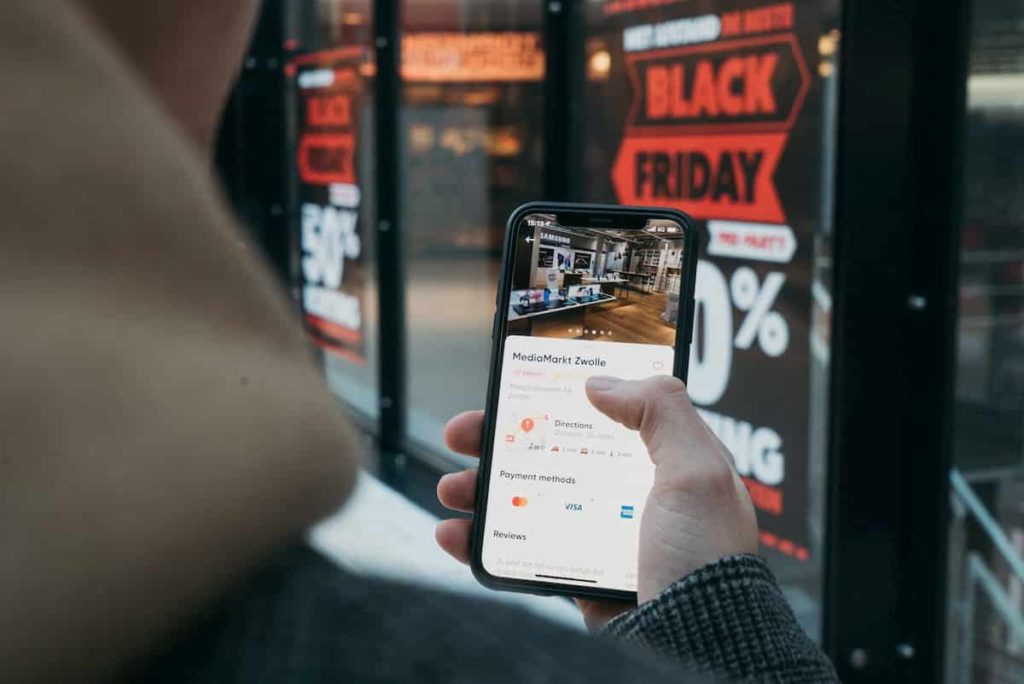Demand for eCommerce is projected to reach record levels; with online spending predicted to stay high, the retail holiday season is expected to surpass $200 billion for the first time in its history.
During sales events such as Black Friday and Cyber Monday, consumers have grown to anticipate the best deals, and businesses have shown to be able to deliver while also promoting early-season spending.
As a result of inflationary pressures on pricing in online categories, the overall amount of savings gained by customers is diminishing as we approach the holiday period. Early discounting patterns will continue, but the most significant reductions will occur over Thanksgiving week and Cyber Monday, according to an Adobe holiday shopping forecast report.
Indeed, Thanksgiving week and Cyber Monday are projected to see the most significant discounts (15-25%) across all categories, with prices dropping down in the run-up to that week, making it the best time to buy.
When it comes to the best day to buy per category, the best day to purchase toys is Thanksgiving Day, November 25, followed by furniture & bedding, tools & home improvement on Black Friday, November 26.

Additionally, on November 27 and 28, electrical appliances and sporting goods apparel will be discounted. Finally, the optimal time to buy a television is on Cyber Monday, November 29, and the best time to acquire a computer is on December 1.
Discounts not as big as in 2020
Although holiday season discounts are predicted to return, they will be lower than previous years. For example, items such as electronics, toys, furniture, and bedding, price reductions of roughly 2-7% were seen over the Labor Day and Memorial Day sales periods this year (smaller than the discounts observed in 2019 and 2020, when prices dropped in the range of 5-11%).
In particular, the predicted increases in demand for the fourth quarter holiday season will cause the most significant discounts to fall into a range of 5-25%, which is much lower than the biggest discounts, which dropped between 10% and 30% (across online categories) in prior years.
On top of the eCommerce inflation, consumers may expect to spend 9% more during Cyber Week, with lesser discounts.

Despite reductions across all categories, no discounts are as significant as those observed in 2020; for example, several laptops, electronics, and apparel received 5% larger discounts the previous year.
Shopping by numbers what the data says
Whatsmore, the season will continue to build on the momentum of the previous year’s tremendous progress. It is estimated that the total amount spent online over the season from November through December would reach $207 billion.
When dealing with a rapidly changing environment, annual growth may range anywhere from 5% ($198 billion) to 15% ($216 billion), depending on COVID cases, shutdowns, and macroeconomic circumstances.
It is expected that global spending for the holidays would total over $910 billion, representing an increase of 11% year over year. In that case, 2021 would surpass $4 trillion for the first time ($4.1 trillion), a significant milestone.
For example, the British are anticipated to spend a total of £3.38 million every minute over the Black Friday shopping weekend this year. On average, they are expected to spend £1.82 million each minute on offline shopping, with the remainder going to online platforms.
According to data presented by Finbold, Black Friday 2021 sales in the United Kingdom are expected to increase by 21.7 % year over year, from £2.78 billion to £3.39 billion. Despite the coronavirus pandemic’s effect, revenues climbed 10.1 % from £2.53 billion to £2.78 billion between 2019 and 2020.
Effects of inflation
Elsewhere, price reductions on electronics were commonplace before the epidemic, before the Holiday season sales had even begun. Products worth $110 in January were worth $100 by November, and vice versa. Overall inflation, across all online categories, was typically down approximately 5% before the Q4 Holiday shopping season really began to take hold.
Price increases have occurred as a result of rising inflation throughout most of this year; prices have remained at higher levels. Prices on the internet are not growing at the same rate as prices on the ground; the Consumer Price Index is up 5.4% year on year in September.

Before seasonal reductions, internet costs are 3.3% higher than they were a year ago, instead of 5% cheaper. This move affects the overall realized savings that customers may anticipate achieving on items this year. For example, instead of receiving $40 off a $1,000 online spend basket, users will be required to pay an extra $200 to get the same amount.
[coinbase]








